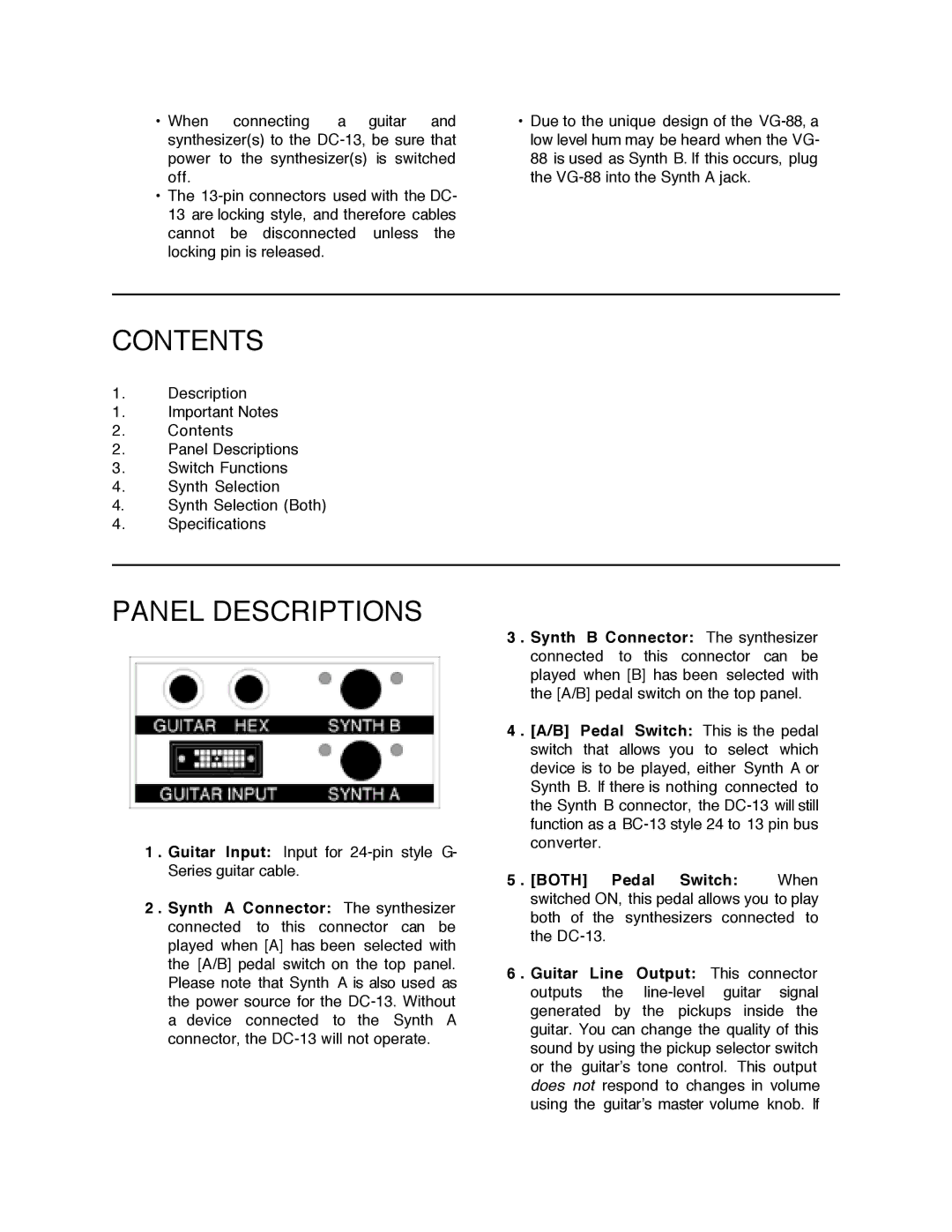
•When connecting a guitar and synthesizer(s) to the
•The
•Due to the unique design of the
_______________________________________
CONTENTS
1.Description
1.Important Notes
2.Contents
2.Panel Descriptions
3.Switch Functions
4.Synth Selection
4.Synth Selection (Both)
4.Specifications
_______________________________________
PANEL DESCRIPTIONS
1 . Guitar Input: Input for
2 . Synth A Connector: The synthesizer connected to this connector can be played when [A] has been selected with the [A/B] pedal switch on the top panel. Please note that Synth A is also used as the power source for the
3 . Synth B Connector: The synthesizer connected to this connector can be played when [B] has been selected with the [A/B] pedal switch on the top panel.
4 . [A/B] Pedal Switch: This is the pedal switch that allows you to select which device is to be played, either Synth A or Synth B. If there is nothing connected to the Synth B connector, the
5 . [BOTH] Pedal Switch: When
switched ON, this pedal allows you to play
both of the synthesizers connected to
the
6 . Guitar Line Output: This connector outputs the
